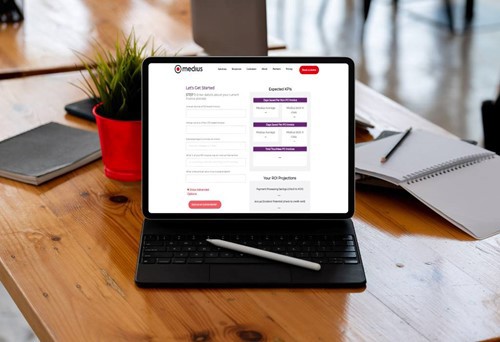Cultivating Effective Digital Transformation in AP
Digital transformation used to be considered an optional change that your company would hopefully get to in the coming years in order to increase efficiency and deliver fresh growth.
One of the lasting changes from COVID-19 is that digital transformation went from an optional—if you’re lucky—goal for companies to one that was a must for survival.
For example, per a study by Gartner, COVID-19 moved digital collaboration tools from the ‘nice-to-have' column to the ‘must-have’ column as seen by the projected 14% increased revenue in these areas by 2022. This trend can be found again and again for digital tools—it’s not exclusive to collaboration and communication.
In fact, 97% of IT directors in a worldwide survey reported that their firms digitally transformed because of COVID-19, and of those respondents, three out of five said they saw a “large amount of change.”
It’s clear that digital transformation is a popular trend today. So what do people mean when they talk about it? What is digital transformation?
Digital transformation is, essentially, the act of leveraging digital technologies such as the cloud, data, analytics, artificial intelligence (AI), and machine learning to digitize how your organization does things—as well as the customer experience. It is a journey that begins with a cultural and organizational shift that will put the end-user experience as the priority.
For finance departments, it’s key that digital transformation includes adding accounts payable (AP) automation to your suite of solutions. Keep reading to discover why, as well as:
- Top things you need to know about digital transformation
- What modern work is morphing into
- Tips from departments that are already digital
- How finance leaders can make a difference
- Accelerating AP digital transformation
- What automation looks like for your AP department

Top Things You Need to Know About Digital Transformation
It's here to stay. A lot of trends have either appeared solely due to recent events or have become prominent sooner than might have previously. Digital transformation across the board has been on the horizon for the better part of a decade, it's just been accelerated and become more necessary for companies to do it sooner than later.
There are a lot of benefits of adopting a digital model for your firm, a study by PTC, found that the top three benefits include improving operational efficiency, an increasingly faster time to market, and the ability to better meet evolving client expectations.
Historically, finance has struggled in this area and has been among those that are slower to go digital. This, however, is increasingly not the case. Deloitte predicts that by 2025, transactions will be touchless as automation and cloud-based solutions have continued to progress at the pace started in 2020, to the point that processes are radically simplified and people's time has freed up to a degree barely imaginable today.
They also predict that by then, finance's role will have shifted to double down on business insights and analytics—with digital transformation taking over and automating the more monotonous tasks, the team will be freed up to focus on strategy and analytics.
Digital transformation can be a slow process and one that is often hampered by less than enthused leadership and staff. True success with transformation requires buy-in across the board. Your company culture needs to be the kind that encourages change and adaptability. It's time to stop talking and start transforming.
Here are some statistics that will help convince your team to digitally transform:
- According to Adobe, companies that are digital-first are three times more likely to exceed their top business goals.
- Deloitte found that digital maturity in a company correlated with high financial performance, in fact, 43% of highly digital mature companies report significantly higher net profit margins than their industry averages.

What Modern Work is Morphing Into
There's an increasing emphasis on flexibility.
Hybrid workspaces and options for employees are the way of the future. This flexibility is part of the process for the 30% of companies working to use digital transformation to increase innovation and reinvent their business models in order to future-proof their companies.
The day where everything is digital is fast approaching. According to research from Gartner, the highest growth of digital transformation can be found from devices at 14% and enterprise software at 10.8% and they believe this is largely due to companies looking to provide innovative workplace solutions.
Going digital goes hand-in-hand with the increasing need to provide remote functionality in a manner that isn't a band-aid temporary solution but rather a solution that is sustainable in the long term.
COVID-19 launched us all into the digital arena. Moving fast and with a readiness to be flexible was a prerequisite for many companies to survive and thrive. The trick now is to make it secure and feasible in the long run. Some employees are prepared to return to the office—and may have done so already—but another portion wants to stay remote.
According to Quantum Workplace, while some staff has shifted back to an in-person workplace in 2021, others are choosing to remain remote or hybrid even once there's no external impetus to do so. The portion of employees that are remote and hybrid is larger than it was pre-pandemic. As of June 2021, 30% considered themselves to be hybrid employees and another 35% reported themselves as working remotely.
Finance and accounts payable departments that want to stay competitive and forward-thinking should consider ways to enable remote functionality in a way that is easy for staff to use while still being secure.
Our accounts payable solution enables end-to-end AP automation all in one platform that can be accessed as easily from the office as your kitchen table. It empowers your team to digitize the entire invoice workflow and send payments electronically and otherwise directly to suppliers and vendors.

Tips from Departments that are Already Digital
The first one to go over is marketing. It was one of the first business areas to begin its digital transformation around a decade ago.
There was a time, not all that long ago, when marketing was divided between traditional marketing and digital marketing. Today, that differentiation is largely unnecessary. When you hear someone discussing marketing, odds are, they mean digital marketing.
As of 2021, marketing departments primarily use digital tools. They use them to focus on improving the experience of prospects and clients, draw insights from data, and cultivate e-commerce and other new roads to market.
What made digital transformation successful for marketing? Part of it was simply the evolution of the internet and the fact that consumers increasingly look up products and companies on social media before committing to purchasing. User-generated content, such as testimonials and reviews, are increasingly the deciding factor that gets prospects to become clients—and where better to cultivate and provide that content than through digital tools and platforms?
The rest of the success comes down to the culture that marketing teams tend to cultivate. By nature, adaptability and flexibility are required to survive—giving marketing a leg-up when it comes time to make sweeping changes and adopt new tools. Another department with a similar culture that has seen success with digital transformation is sales.
Sales departments have evolved to be increasingly digital, especially when compared to the 80s and 90s. Tactics such as going door-to-door or personally visiting an office are more of a quirky one-off type of thing these days than the main way for sales teams to operate.
Even cold calls are decreasing in use in the face of social media networking, email campaigns, digital lead generation platforms, and virtual conferences. Some conferences may never return to in-person as people get used to being able to join industry discussions from the comfort of their homes.
In fact, Crunchbase recommends that your sales team be one of the driving forces behind your company's digital transformation. Your sales team knows your customer's needs well and understands how that correlates to your own brand.
The innovation of technology is propelling everyone forward these days, not just select departments such as marketing and sales.

How Finance Leaders Make a Difference
It starts with understanding that getting the right technological tools is only half the process.
As we mentioned before, to truly succeed and have long-term viability, people have to be on board and enthusiastic about how going digital will benefit them. For leaders, this means that getting your team excited about the change needs to be a priority.
Provide them the tools, motivate them, and listen to them—the rest will fall in place from there. To do this well, you have to figure out where you're at currently, where you want to be after digital transformation, and what barriers you need to overcome.
Dell Technologies found that 94% of businesses are facing fixed barriers to digital transformation. These barriers include data privacy and security, lack of budget and resources, and being unable to extract valuable insights from data and/or information overload.
The key to overcoming these barriers is, in most cases, to find the right tool. For example, cloud-based portals are among the most secure of digital tools and can drastically reduce your risk of fraud. In spite of the barriers to digital transformation, the same study found that 79% of companies are reinventing their business model and 74% are investing in digital services.
Leadership sponsorship is a great way to overcome barriers as well. Encouragement from the top boosts morale and empowers staff to find creative ways around barriers and lets them look forward to the end result of digital transformation with the confidence that it will be seen through.
It's important to invest in digital tools that make life easier and have a return on investment (ROI), near immediately, such as automation.

Accelerating AP Digital Transformation
Now that you understand what digital transformation is and have gotten some tips on how to do it well—you're probably wondering if there's a way to do it fast.
The short answer is, yes. The long answer has more nuance.
If your goal is to adopt digital transformation as quickly as possible, you should start with a road map. Plan out what's worth continuing, what needs to stop, and what should be begun.
Next, you should choose some quick fixes you can implement. This will build morale and momentum and allow your business to start experiencing the benefits of going digital sooner. Quick fixes for businesses often include shortening the distance to making decisions, ceasing non-digital conventional workflows that are more convoluted than helpful—familiarity isn't a good enough reason to continue using outdated processes—and beginning to leverage digital tools that once implemented make your teams' lives easier and more efficient.
It's common for departments, such as finance and AP, to have wasteful activities that are hampering productivity and efficiency.
The last step is to take the momentum from the early fixes and ensure that you and your company follow through and complete the transformation. While it can be done in stages, it's important not to get stuck in a limbo status where your digital tools are being bogged down with more traditional and manual workflows that haven't been transformed and optimized.

What Automation Looks Like for your AP Department
One area that benefits the most from digital transformation is your accounts payable department—and it can be done fairly quickly through automation!
When most think of AP automation, they think of invoices. A surprising amount of companies still handle paper invoices. Or they think scanning invoices and emailing them counts as digitizing and automating them. Not only is this not true, but it's also a practice that is vulnerable to fraud.
Truly automated invoicing is a process where your invoice processes are configured to function automatically and digitally. Saving you time and ensuring you never lose an invoice. Medius Pay, extracts invoice data from any file type, populates that information into your digital system, and begins the approval process that you can dictate.
But automated AP doesn't stop with invoices. It also applies to how you pay your suppliers and vendors. Payment automation will reduce bottlenecks, enable faster payment processes, and open the door to new revenue with virtual card rebates.
It's possible to automate AP with ease when you're working with the right partner.
Conclusion
Digital transformation is a process that is becoming more and more detrimental to put off. Don't let your company or your accounts payable department fall behind and start the transformation process now!
If you’re ready to start a conversation about advancing your AP department into the digital future with our help, reach out today.
Originally posted September 2021. Updated for quality and accuracy October 5th, 2022.






